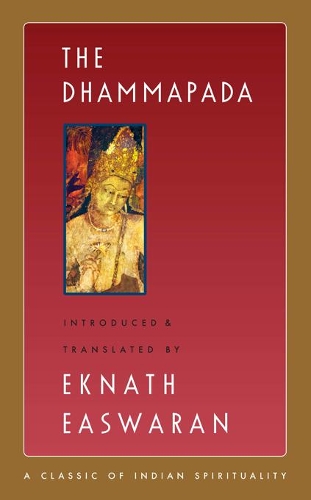
The Dhammapada
(Hardback, Second Edition)
Available Formats
Hardback, Second Edition
Published: 19th November 2019
Paperback, Second Edition
Published: 21st June 2007
Publishing Details
The Dhammapada
By (Author) Eknath Easwaran
Nilgiri Press
Nilgiri Press
19th November 2019
Second Edition
United States
Classifications
General
Non Fiction
Ancient Greek and Roman philosophy
294.382322
Physical Properties
Hardback
280
Width 127mm, Height 206mm, Spine 22mm
467g
Description
Eknath Easwarans translation of The Dhammapadain paperback is the bestseller among comparable translations. A second edition was published in 2007.
Sales for Easwaran's "Classics of Indian Spirituality" series:
The Bhagavad Gita
235,000 units net, 33,400 units last year
The Upanishads 110,000 units net, 14,400 units last year
The Dhammapada 70,000 units net, 7,850 units last year
About Easwarans The Dhammapada paperback
Sales and Market Share:
Sales of 7,000 per year
27% share of total US market for Dhammapada translations and commentaries
Sells twice as many as the second best-selling translation
Whats special about this book:
Clear, accessible, reliable translation
Comprehensive, 85-page introduction gives an overview of the Buddhas teachings that is penetrating and clear
Introduction includes the story of the young Siddhartha and his heroic spiritual quest
Readers:
Academic courses, e.g. Philosophy, Asian Studies, Religious Studies
Yoga schools
Readers interested in philosophy, spirituality, Buddhism, Hinduism, religion
Reviews
No one in modern times is more qualified no, make that as qualified to translate the epochal Classics of Indian Spirituality than Eknath Easwaran. And the reason is clear. It is impossible to get to the heart of those classics unless you live them, and he did live them. My admiration of the man and his works is boundless. Huston Smith, author of The Worlds Religions
Author Bio
Eknath Easwaran (1910-1999) brings to this volume a rare combination of credentials. He was trained from an early age in Sanskrit, of which Pali, the language of the Buddha, is a simplified version. Later he studied English literature and was chairman of the English department at a major Indian university when he came to the United States on a Fulbright fellowship in 1959. Huston Smith writes, "His Indian heritage, literary gifts, and spiritual sensibilities here produce a sublime rendering of the words of the Buddha. Verse after verse shimmers with quiet, confident authority."
In 1961 Easwaran founded the Blue Mountain Center of Meditation in California, and in 1967, at the University of California, Berkeley, he taught the first academic course on meditation ever offered for credit at a major American university. He continued to teach passage meditation and his eight-point program for spiritual living to an American and international audience for almost forty years. His thirty-three books on meditation and the classics of world mysticism are translated into twenty-five languages.
From the mid-1970s onwards, Easwaran held classes on the Dhammapada for a primarily American audience. A gifted teacher, he was able to anticipate the problems that Western readers may have with the concepts underlying the classics of Indian spirituality, and to explain them in fresh and profoundly simple ways. But for Easwaran the Dhammapada was not just of intellectual interest. His main qualification for interpreting the Dhammapada, he said, was that he knew from his own experience that these verses could truly transform our lives.
